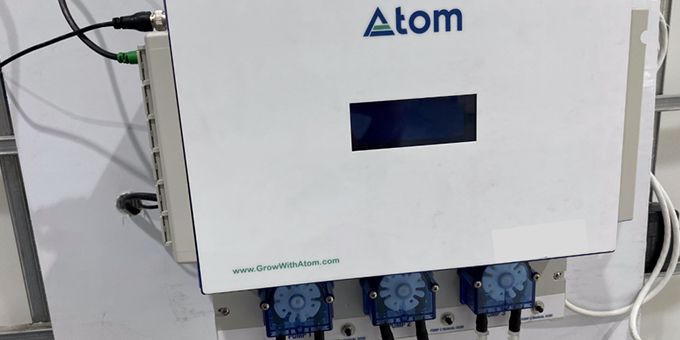With practice, many hydroponic growers can fine-tune their growing environment to remove bottlenecks, minimize maintenance, and increase the quality of their produce. One way they do this is through automated nutrient dosing.
 7 Common Questions About Autodosing in Hydroponics
7 Common Questions About Autodosing in Hydroponics

Article from | ZipGrow
Hydroponic production gives growers increased control over the way they cultivate their food or medicinal crops.
With practice, many hydroponic growers can fine-tune their growing environment to remove bottlenecks, minimize maintenance, and increase the quality of their produce. One way they do this is through automated nutrient dosing.
With “autodosing” hydroponic growers have the ability to provide the perfect amount of nutrients to their crops, while minimizing their time spent measuring and monitoring – something all commercial growers will gladly embrace.
But, the learning curve behind autodosing can be a bit overwhelming for the new (and even experienced) hydroponic grower.
In this post, we’re answering some of our most frequently asked questions about autodosing to help you decide if automated dosing might be a useful technique for you.
Do I need to be tech-savvy to operate an auto-doser?
No. The most technically demanding part of the process is creating the settings on your autodosing system. Most autodosing systems come with manuals that explain this in detail.
Can I trust a machine to feed my crops?
Many crop failures are based on human error and inconsistency. When water pH and EC levels fluctuate, you open up possibilities for health issues or, in more extreme cases, total crop loss.
In contrast, automated dosers provide stable environments for plant growth, doing what a machine is supposed to do: accurately measuring nutrients and pH and releasing precise amounts of nutrients or acid into your system.
I have a small small system. Should I consider an automated dosing system?
It depends. Small systems can be just as hard (or harder!) to keep in balance as large systems. If you want to have a stable growing environment, and free up more of your time, then you might want to consider an autodose system. Be sure to weigh the benefit of healthy crops and saved labor against the cost of an autodosing system.
How much time can I save?
Most growers can save around 15-30 minutes a day by using an autodosing system. These are the routine tasks that your system requires like measuring pH, measuring EC levels, topping off the reservoir, measuring again, etc.
However, the benefits of an autodose system stretch beyond “minutes saved”. Autodosing systems can prevent costly events like crop loss as well as increasing yield, which are both important to a farmer’s bottom line.
However, the benefits of an autodose system stretch beyond “minutes saved”. Autodosing systems can prevent costly events like crop loss as well as increasing yield, which are both important to a farmer’s bottom line.
Can I adjust the flows for custom crop cycles?
Yes. One of the nice things about using a nutrient doser is that it will help you collect uniform data for your plants. Using an automated nutrient doser allows you to test your nutrient flows and optimize them for specific crops and desired results. This makes the trial-and-result process much easier than a manual process.
What should I consider before choosing a system?
If you take a few minutes to prepare for your search, it will help you during your purchase and onboarding process. Answer these questions:
- Is labor saving your number one priority?
- Would you like to manage the system remotely?
- Do you need text or email alerts about nutrient and pH levels?
Make sure you are clear about why you would like an automated system, and you are likely to find something much more suited to your needs.
What options do I have for choosing a system?
There are dosing systems for managing your pH levels, nutrient levels, special additives, and dosing schedules, etc.
You can shop around for autodosing systems online at our online store here.
Conclusion
Automated nutrient dosing can free up your growing operation to expand, increase yield, and increase quality. The technology has come a long way in recent years, and the prices have come down as well.
The content & opinions in this article are the author’s and do not necessarily represent the views of AgriTechTomorrow
Comments (0)
This post does not have any comments. Be the first to leave a comment below.
Featured Product

